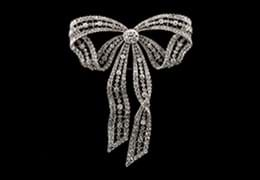The Selected Contents of Elibank House, Taplow | Interiors Auction | 20 & 21 April 2022
On 20 & 21 April, we have our two-day Interiors auction. Featuring a selection of furniture, carpets, ceramics, works of art and sculpture, a specialist section of decorative objects and modern design items, the auction also includes the selected contents of Elibank House, Taplow. Ahead of the auction, Head of Sale, Ashley Matthews takes a look at this private collection, and picks out some of the highlights.

Elibank House is arguably one of the finest Queen Anne houses in the south east of England. Built around 1705, the house was commissioned by Alexander Murray, 4th Lord Elibank and was reputedly designed by the English Baroque architect and theatrical set designer Sir John Vanburgh. The history of the house is ingrained within it – the Murrays were a Scottish noble family and Elibank was built as their residence whilst in England, close to both London and patronage of the Royal Court in Windsor. Many of the original period features which framed the collection presented in this auction, remain including stunning panelled rooms, magnificent doors and beautiful fireplaces.

The property underwent a full restoration over the last 25 years by the present owner who filled the house will a plethora of styles and tastes which fused to create an interior worthy of the axiom ‘An English Country House’.
Throughout the house there is a sense of occasion and a wonderful sense of history, owing to the numerous items of period furniture and works of art from provenances such as Mallett, Mentmore Towers and the 5th Marquess of Camden. Yet, the overriding feeling is one that this is a warm and comfortable family home with a collection that is perfectly at ease with itself.

Highlights from the Collection
The collection includes a variety of furniture, works of art, sculpture, carpets, country sporting items, as well as garden furniture. Particular highlights include Lot 480, a Victorian oak metamorphic library chair, circa 1880.
Designed to enhance any library or study, this piece cleverly incorporates two pieces of furniture in one. It can be used as a library chair, whilst allowing the hinged seat to revolve and become a flight of four library steps to help reach the higher shelves in one's library. Models of metamorphic chairs can be seen in the Pictorial Dictionary of British 19th Century Furniture Design (page 265) including designs by Shoolbred.

We then have Lot 641, a mahogany and brown leather upholstered armchair in George II style from the last quarter of the 19th century. It is designed with a wing back and arms above carved cabriole legs which are finished with claw and ball feet. This armchair is believed to have been owned by the 6th Earl of Rosebery and part of the magnificent collection of the Rothschild/Rosebery family at Mentmore Towers, a grand country estate in Buckinghamshire. It was sold in Sotheby's house sale, Mentmore in May 1977 as part of Property from the Collection of the late Jane, Lady Abdy.

A returning item, having previously been purchased from the Dreweatts salerooms in 2018 in our Summer Sale, we have Lot 729, a bronze alloy group of Europa and the Bull, dating to circa 2000. The maiden is portrayed as nude and tied to the beast's back with ropes, the bull with his head hung down to the right.

Another interesting item is Lot 663, a Victorian cast iron wood burning stove or 'Nautilus Grate', dating to circa 1885. It was designed by James Bazeley Petter.
In 1865, John Petter of Barnstaple bought an ironmonger's business in Yeovil as a wedding present for his son, John Bazeley Petter. Within a few years John Bazeley Petter had expanded the retail ironmongery and engineering business by purchasing the Yeovil Foundry and took into partnership the manager, Mr Henry F Edgar. They produced agricultural implements and machinery, the firm of Petter and Edgar prospered, but it was James Petter's invention of the 'Nautilus' grate and fireplace in 1881 which brought the firm to national attention when the grates were installed in Queen Victoria's residences at Osborne House and Balmoral. The design of the grate was based on the internal shape of the Nautilus shell by means of which the fumes and smoke circulated in a chamber before being drawn out through the flue.

A striking statement piece is Lot 491, a Continental yellow painted wrought iron ten light chandelier. This chandelier hangs at an impressive 120cm high, with a diameter of 105cm, and would grace any grand entrance hall or substantial bay window. It is designed with open scroll work throughout.

Finally, a lovely item is Lot 343, a Victorian walnut and inlaid music canterbury, circa 1870. Featuring a closed top, this would have once housed sheet music, keeping away dust and any unwanted pests. The front is decorated with a delicate pierced fretwork panel and backed with pink silk fabric. It is on further carved scroll feet, which are all indicative of this period in English cabinet making.

View page turning catalogue
Auction Details
Wednesday 20 & Thursday 21 April, 10.30am BST
Donnington Priory, Newbury, Berkshire RG14 2JE
Day One (Lots 1-325) | Wednesday 20 April | View auction
Day Two (Lots 331-770) | Thursday 21 April | View auction
View page turning catalogue
Sign up to email alerts
VIEWING:
- Viewing in Newbury:
- Easter Monday 18 April: 10am-4pm
- Tuesday 19 April: 10am-5pm
- Wednesday 20 April: from 8.30am
- Thursday 21 April: no viewing
- Condition reports and detailed images are available on dreweatts.com or by request.















